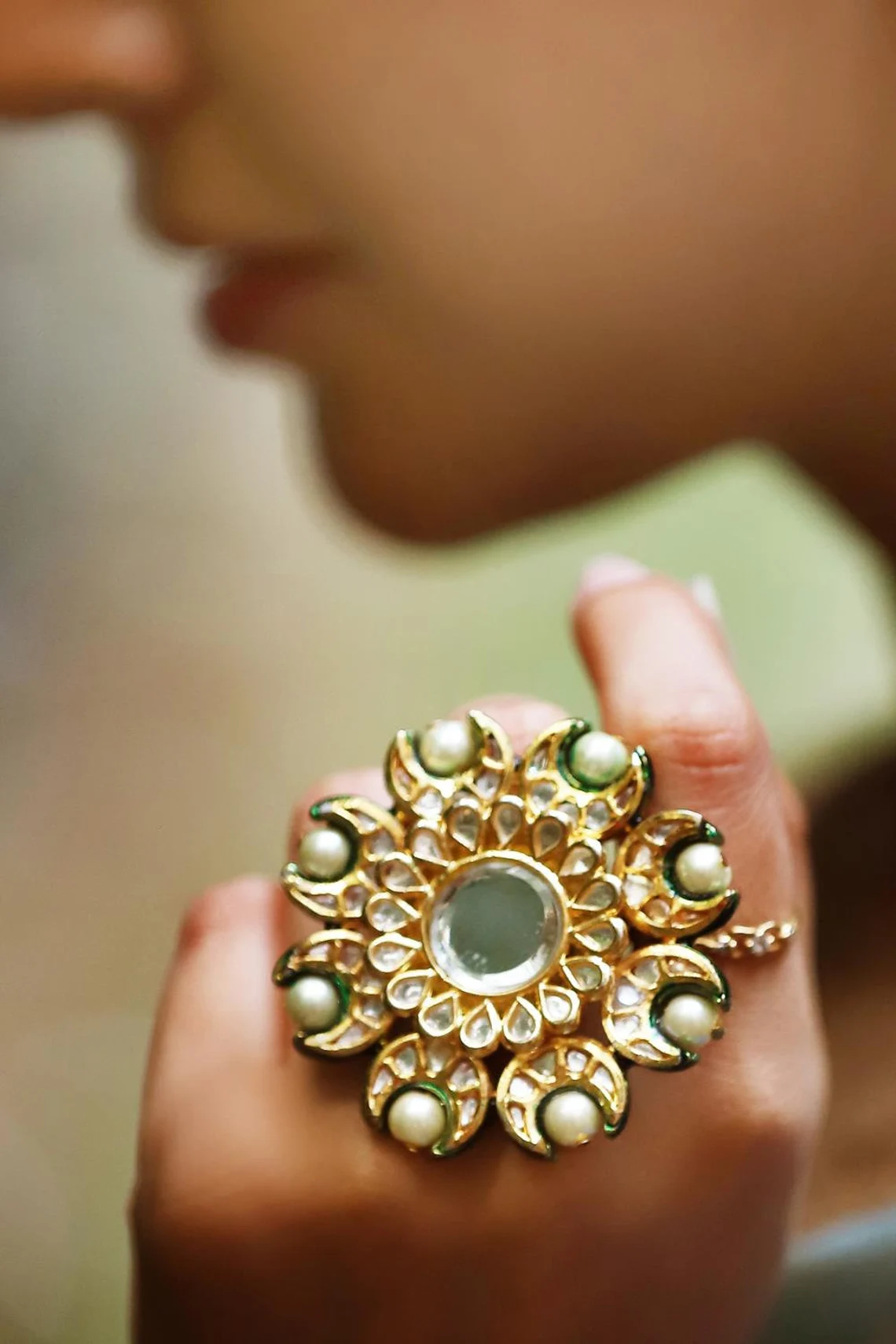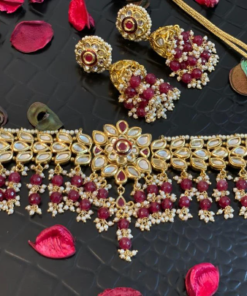- The “Mughal Ring-Woman” is a renowned historical artifact, symbolizing the opulence and cultural significance of the Mughal Empire in India.
- Crafted during the Mughal era, which spanned from the 16th to the 19th century, the ring-woman exemplifies the exquisite craftsmanship and artistic prowess of the time.
- Made from precious materials such as gold, gemstones, and pearls, the ring-woman showcases the Mughal Empire’s affinity for luxury and intricate detailing.
- This artifact likely served as a jewelry piece, reflecting the Mughal society’s penchant for adornment and the display of wealth and social status.
- The ring-woman might have been worn by a noblewoman or a member of the royal court, underscoring its connection to the elite and the cultural elite of the Mughal period.
- The piece embodies the fusion of Persian, Central Asian, and Indian artistic influences, representing the cultural diversity and cosmopolitan nature of the Mughal Empire.
- Its design might incorporate elements from various art forms, such as miniature painting, calligraphy, and architectural motifs, reflecting the holistic approach to aesthetics in Mughal art.
- The artifact’s historical importance lies in its role as a tangible link to the Mughal Empire, offering insights into the material culture, societal values, and artistic achievements of that era.
- The Mughal Ring-Woman serves as a testament to the legacy of the Mughal Empire, reminding us of the grandeur and sophistication that characterized this period in Indian history.
- Today, the artifact likely resides in a museum or a private collection, contributing to the preservation and dissemination of Mughal history and art for future generations to appreciate and learn from.
| ATTRIBUTE | VALUE |
|---|---|
| Name | Mughal Ring-Woman |
| Type | Finger ring |
| Usage | Worn as an ornamental finger ring |
| Occasions | Formal events, cultural gatherings |
| Payments In India |
| Credit Cards, Debit Cards, Netbanking |
| Cash Before Delivery. In this mode of payment cash is collected in advance. |
| Bank deposit to our Indian bank account. |
| Payments Outside India/ International |
| Credit Cards |
| Paypal |
| Bank deposit to our Indian bank account. |
| Refunds/Replacements | If you wish to replace a damaged product, we will send you a new one. We can also refund the amount to your credit card/bank account or offer you a store credit redeemable towards future purchases. |
Be the first to review “Mughal Ring-Woman” Cancel reply
Related Products
Jewellery
Rated 4.64 out of 5
₹189.00
Jewellery
Rated 5.00 out of 5
₹129.00
₹199.00
Jewellery
₹159.00
Jewellery
₹129.00
Jewellery
₹119.00
Jewellery
₹139.00
Jewellery
₹129.00
₹199.00

































Reviews
There are no reviews yet.